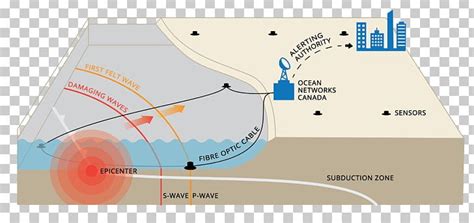British Columbia Earthquake: Aftershock Warning: A Comprehensive Guide to Preparedness
The west coast of Canada, specifically British Columbia, sits on the Cascadia Subduction Zone, a major fault line capable of producing significant seismic activity. While a massive earthquake is not imminent, the region experiences frequent smaller earthquakes, and the potential for a larger event remains a real possibility. Understanding the risk and preparing for aftershocks is crucial for residents and visitors alike. This guide provides a comprehensive overview of aftershock warnings, preparedness strategies, and crucial actions to take in the event of an earthquake in British Columbia.
Understanding Aftershocks
Aftershocks are smaller earthquakes that follow a larger earthquake, also known as the mainshock. They occur as the Earth's crust readjusts after the initial rupture. Aftershocks can range in magnitude and frequency; they can be felt for weeks, months, or even years after the mainshock. The intensity and duration depend on the size of the mainshock and the specific geological characteristics of the area. Predicting precisely when and where aftershocks will occur is impossible, making preparedness even more critical.
Aftershock Warning Systems
While there isn't a precise prediction system for aftershocks, several measures aid in monitoring seismic activity. These include:
- Seismic Networks: Extensive networks of seismographs across British Columbia constantly monitor ground motion, providing real-time data on earthquake activity. This data helps scientists assess the likelihood and potential magnitude of aftershocks.
- Earthquake Early Warning Systems: While primarily focused on alerting before the shaking from the mainshock, these systems can also provide a sense of ongoing seismic activity, giving a general indication of potential for further tremors. The information provided, however, is not a precise prediction of aftershocks.
Preparing for Aftershocks
Proactive preparation is key to mitigating the risks associated with aftershocks. Here's how to prepare:
- Develop an Emergency Plan: Create a detailed plan that outlines evacuation routes, meeting points, and communication strategies. Include contact information for family and friends, as well as local emergency services. Practice the plan regularly with your family.
- Secure Your Home: Secure heavy objects that could fall during shaking. This includes furniture, appliances, and wall hangings. Strengthen shelves and cabinets.
- Emergency Kit: Assemble an emergency kit that contains enough supplies for several days. This should include water, non-perishable food, a first-aid kit, medications, flashlights, batteries, a radio, and blankets.
- Communication Plan: Designate a primary contact person outside the area to serve as a communication hub. This person can check in on you and relay messages. Consider alternative communication methods, such as satellite phones or two-way radios.
- Structural Assessment: If you have concerns about the structural integrity of your home, consult a structural engineer. They can evaluate the building's ability to withstand seismic activity.
Actions During an Aftershock
Following the mainshock, remain vigilant and take these actions:
- Stay Calm: Panic will only hinder your ability to react effectively. Follow your emergency plan.
- Stay Indoors (if safe): If you're indoors and the shaking stops, remain where you are until the shaking stops completely. Avoid moving to another location immediately, as you may risk injury from falling objects.
- Check for Injuries: Check yourself and others for injuries. Administer first aid as needed.
- Check for Damage: Inspect your home for damage. If there are signs of structural damage, evacuate immediately.
- Listen to Official Sources: Get updates on the situation from reliable news sources and emergency management agencies.
- Avoid Damaged Areas: Stay clear of areas with visible damage, as further collapses are possible.
British Columbia's unique geography necessitates heightened awareness and proactive preparedness against earthquakes and their inevitable aftershocks. By following these guidelines and staying informed, you can significantly improve your safety and resilience during and after a seismic event.
